Mineral supplements are an essential part of a leopard’s gecko diet. Calcium is among the most indispensable minerals for these reptiles. In the wild, they feed on various foods that contain Calcium, but it’s the access to light that helps them to synthesize vitamin D3 for proper absorption of Calcium.
In captivity, it’s likely that your leopard gecko may lack enough Calcium because the common feed is a poor calcium source. As such, they require calcium supplementation to ensure faster growth and specifically support the development of bones.
How Has Captivity Changed Things?
In their natural environment, leopard geckos source their Calcium from rocks and other surfaces. Also, some wild insects are rich in Calcium and other minerals, as well as various wild plants. The natural sunlight exposes them to Vitamin D3, which is required for calcium absorption.
All these conditions are not naturally available in the terrarium, so it’s impossible to replicate them completely. Leopard geckos in captivity rely on the owners for supplementation.
Feeder insects also lack Calcium and other minerals needed for a healthy gecko. Also, growth seems to occur more rapidly in captivity, which means a demand for more Calcium to maintain healthy bones.
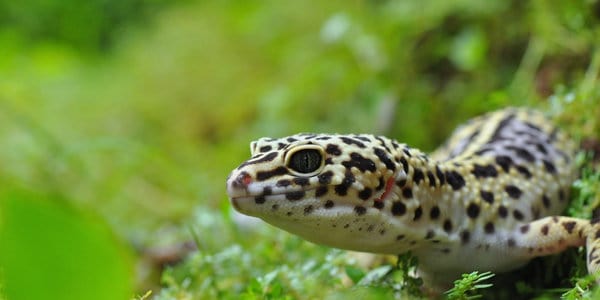
4 Calcium Benefits for Leopard Geckos
Leopard geckos need enough Calcium in and out of captivity for their well-being. The nutrient is vital for maintaining a healthy metabolism, bone development, and muscle function in reptiles. Here are a few key reasons why Calcium is vital for the healthy growth and development of leopard geckos.
1. Regeneration of Body Parts
Leopard geckos are unique organisms that can regenerate fallen body parts. Owners will know that they regenerate tails after losing them during a conflict or when they feel threatened. Researchers have also established that these lizards can regenerate parts of their brains and spinal cords.
Calcium is needed for multi-tissue regeneration, and a lack of this nutrient can lead to slow healing, inability to heal, and susceptibility to injuries and other health concerns.
2. Maintenance and Growth of Teeth
Leopards are classified as polyphyodonts or organisms with teeth that get replaced after a few months. With over 100 teeth, a lot of Calcium is needed for the growth of these teeth and their maintenance. Having teeth problems is associated with poor gripping and tearing of food.
3. Breeding
A leopard gecko requires lots of Calcium during egg production because of the formation of shells. Besides, she lays a clutch of eggs after every few weeks and can keep producing for up to 5 months. This is why calcium supplementation is a must during this period.
You should provide more than enough Calcium during this period to avoid the female depleting the calcium resources and being deficient. The most common illness in calcium-deficient leopard geckos is a metabolic bone disease which we will discuss below.
4. Prevention of Life-Threatening Illnesses
Metabolic Bone Disease is a life-threatening disease that develops when there’re insufficient calcium levels in the gecko’s body. It can develop when the phosphorous levels are in excess when the Vitamin D3 is too low, or simply a lack of adequate Calcium.
Without enough Calcium in the diet, the lizard utilizes the Calcium in the bones to survive. An adult leopard gecko will begin to lose bone density, while juvenile geckos will experience stunted growth resulting from a lack of bone density formation.
Common Symptoms of MBD include:
- Lethargy
- Crooked or bowed legs
- Loss of appetite
- Tail thinning
- Fragile limbs, difficulty walking and raising the body off the ground
- Lower jaw flexibility
- Seizures
- death
Fortunately, the illness is treatable when addressed early. You can prevent it by providing the leopard gecko with a varied diet and correct supplementation.
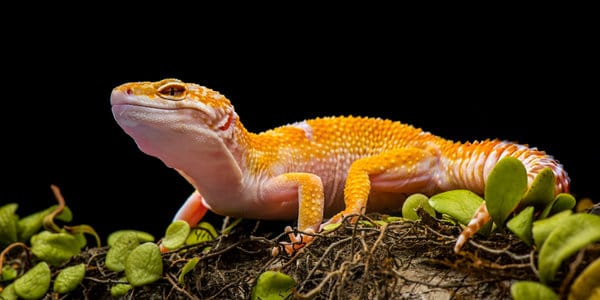
4 Ways to Give Your Leopard Gecko Calcium
There are different ways to provide your leopard gecko with Calcium. Here are four simple ways to do it:
1. Gut-loading
This is a process of serving your feeder calcium supplements and other nutrient-rich foods before providing them to your leopard gecko. The feeders should be offered to Leopard geckos approximately 24 hours after being fed with the supplement. Geckos will absorb these essential nutrients when consuming the insects.
You can decide to gut-load your worms or purchase gut-loaded mixes for your feeders if you need to offer them the necessary supplements.
2. Dusting
Dusting is a common practice in captivity where the feeder insects are dusted using a nutrient powder before being fed to the leopard gecko. To do this, you need a plastic enclosure or bag where you place the insects and the supplement.
This is then shaken lightly to ensure the insects are coated with the powder before placing them in the feeding tray.
Just ensure you don’t over-dust the insect, as this will make them less flavorful. You can also try spraying the insects with some water before placing them in the dust if you think the dusting will fall off before consumption.
Sometimes, the powder can get stuck in the leopard gecko’s eyes or eyelids, but this should resolve with time. If the dust doesn’t come off, you can mist the lizard with distilled water or use a spray or syringe.
3. Calcium Lick Dish
This is mostly used for breeding females who need additional Calcium to support egg production. Adding a dish with pure calcium powder in their tank will indeed offer them the extra boost of Calcium they need. A teaspoon amount may be sufficient. Avoid mixing Calcium with Vitamin D3 to avoid any rare overdose leading to organ failure.
Most leopard geckos may not require to lick pure Calcium from a dish as they typically could get enough of it from dusted and gut-loaded insects.
However, your vet is likely to recommend leaving the dish in the tank, preferably when they are most active in the early morning or at night.
4. Calcium Snacks
Instead of a lick dish, you can offer the gecko a calcium snack such as sepia bone or cuttlebone. Although they may not be the tastiest for the leopard gecko, they are considered some of the best sources of Calcium.
Remember that these are only recommended when the leopard gecko is deficient or is breeding or if your vet has recommended an extra calcium boost.
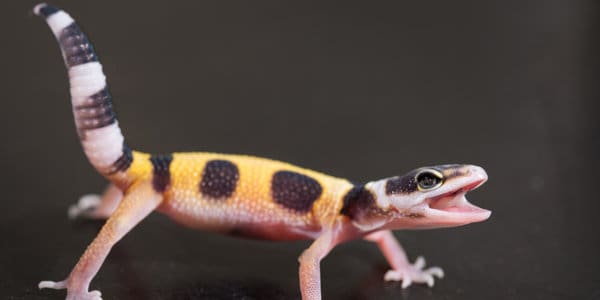
The Relationship between Calcium and Phosphorus
Phosphorus is a naturally occurring mineral found in all feeder insects. It’s important for metabolizing various vitamins and minerals, including Calcium. However, too much phosphorus hinders proper calcium absorption. While their diet needs Calcium, you need to maintain a 2:1 calcium-to-phosphorus ratio in the diet.
Providing more phosphorus in a leopard gecko’s diet will mean they need to get more Calcium to absorb enough. That’s why it’s essential to consider how rich in phosphorus the feeder insects are to pick the right supplement. You might even pick a supplement without phosphorous if the feeders have enough phosphorus.
Calcium for Feeder Insects
Leopard geckos in the wild mainly feed on insects. Unfortunately, feeder insects are low in Calcium and high in phosphorus. As such, you need to provide calcium supplements to ensure they offer a better ratio of the two nutrients.
Check out this table below and how the content varies:
| Live feed species | Calcium (mg) | Phosphorous (mg) | Cal:P |
| Mealworms | 156 | 2640 | 1:17 |
| Waxworms | 203 | 1930 | 1:9.5 |
| Crickets | 366 | 2190 | 1:6 |
| Superworms | 262 | 2090 | 1:8 |
| Black Soldier Fly Larvae | 9340 | 5355 | 1.74: 1 |
Looking at the results above, the most common feeder insects for leopard geckos have a higher phosphorous-to-calcium ratio. The black soldier fly larvae are an exception, containing more Calcium, but scientists are still unsure whether they are a good source of Calcium for Leopard geckos because much of the Calcium is locked in the exoskeleton.
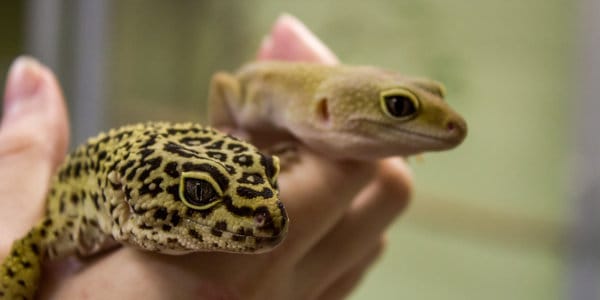
How much Calcium Should you Provide for Leopard Geckos?
Nutrient and vitamin supplementation will differ according to the life stage of your leopard gecko. Still, it can also be determined by whether there’s breeding or if the gecko has a health condition.
We have detailed a section below on the recommended gut-loaded feed at each stage, including how many of these feeds would need vitamin D3, Calcium, and multivitamin dusting.
Babies Geckos
A baby reptile gecko needs a daily feed of gut-loaded staple feeders. Three of these feeds should contain a vitamin d3 and calcium supplement. Having a weekly multivitamin will also support their rapid growth.
Juvenile Leopard Geckos
When your gecko reaches the juvenile stage, you should feed him a few days a week with gut-loaded feeders. One of these feeds should contain Calcium, and the other two feeds need to incorporate vitamin D3 and Calcium. Throwing in a multivitamin once every other week is sufficient.
Mature Adult Leopard Geckos
Mature leopard geckos should eat on alternate days or at least 3 days a week with gut-loaded insects. One of the feeds needs to be dusted with pure Calcium, and another two feeds containing D3 and Calcium, just like the juveniles.
However, a multivitamin should be given once a month. You could also place a pure Calcium lick dish periodically, particularly in the evenings.
Breeding Females
These will need additional care when it comes to supplementing them for Calcium and vitamins. This is due to the resources needed for egg formation. With this in mind, you should feed them gut-loaded insects on alternate days, like the mature geckos.
However, these need at least 4 of the feeds to be dusted with calcium and vitamin D3. Also, place a pure calcium dish in the tank to allow them to feed on it as they like.
Leopard Geckos are unlikely to overdose on Calcium and will judge how much they need. A weekly multivitamin is also needed.
Frequently Asked Questions (FAQs)
Calcium is vital for a healthy leopard gecko. Without Calcium for a few weeks, they can start showing symptoms of calcium deficiency and could develop MBD. If allowed to progress, MBD is life-threatening and could be irreversible.
Should You Add Other Supplements in Addition to Calcium?
If you feed your gecko with gut-loaded insects, there may be no need for vitamin supplementation. However, you need to consider a vitamin supplement for those nursing an ill leopard gecko or a breeding female who is getting ready to produce her eggs.
How Do You Choose The Correct Calcium Supplementation?
Leopard Geckos need vitamin D3 and calcium supplementation. The amount of these supplements will depend on their age, breeding, and health status. It’s essential to go with a quality supplement that will maintain the gecko’s intake of Calcium to phosphorus ratio of 2:1. This is considered the optimal ratio to support their metabolism and health.
Before choosing your supplement, ensure you check how rich in phosphorous the main staple feeders are, as most insects tend to be lower in Calcium and high in phosphorous.
The mineral hinders proper calcium absorption, so it should be limited if the gecko is to absorb enough Calcium. Breeding geckos will need a more powerful calcium supplement.
How Much Should I Give my Leopard Gecko Vitamin D3?
Vitamin D3 helps your gecko absorb more Calcium. The skin often synthesizes the nutrient after they are exposed to sunlight, which geckos don’t get in captivity. That said, you need to supplement your feeders with vitamin D3 to meet the growth requirements of leopard geckos.
Can Leopard Geckos get too Much Calcium?
Yes, It’s possible for leopard geckos to have a calcium overdose, but this is rare. It’s unlikely to occur if you’re just providing pure calcium because the gecko’s body only absorbs as much of the D3 as its system allows.
However, if you over-supplement both vitamin D3 and Calcium, the body might absorb too much Calcium, which can crystalize inside the organs and cause failure.
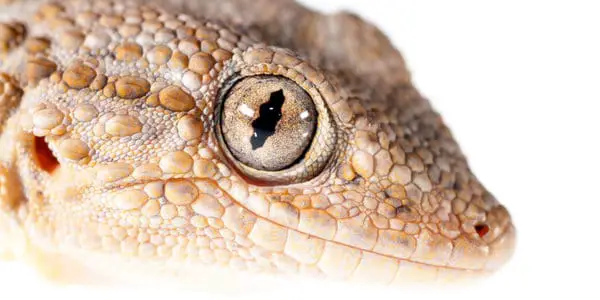
Conclusion
With the information in this guide, supplementing your gecko should be more accessible. Calcium is essential for their growth and metabolism, and a lack of sufficient Calcium can be detrimental and lead to illnesses such as MBD.
For proper absorption of Calcium, ensure there’s enough vitamin D3, and the phosphorous should be twice lower than Calcium.
Gut load your feeders before a feed, and be sure to dust them with calcium powder and D3. This will ensure the pet gets enough nutrients and vitamins for a healthy leopard gecko.
Keep an eye on your gecko’s behavior and react quickly if you suspect any signs of calcium deficiency.
